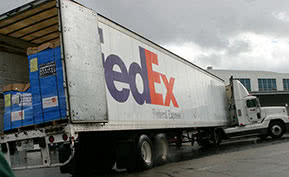Improve Your Field Service with CRM
In the past, field service operations were often disconnected from other customer-facing functions. While call centers, sales and marketing departments, and help desks have always been viewed as key contributors to customer satisfaction and loyalty, field support teams were considered a cost of doing business.
In recent years, this perception has changed. Many businesses now see field support as playing a major role in the customer experience, and as a result, have made efficient, cost-effective and profitable field service operations a top priority.
In fact, according to the Service and Support Professionals Association (SSPA), “field service is now finding itself in the customer experience spotlight, often for the first time. Driving costs out of field service operations continues to be the primary goal for most organizations, and more companies realize that field agents, with their face to face interactions with customers, have a major impact on customer satisfaction and incremental revenue.”
Customer relationship management (CRM) solutions can help businesses to centralize, streamline, automate, and enhance their most important field service operations – allowing them to deliver superior, high-quality on-site service to clients, while enabling them to reduce redundant, disjointed manual processes and minimize overhead costs. Many CRM packages on the market today incorporate robust field service capabilities, so companies with large field service operations can:
Optimize Scheduling, Capacity Planning, and Resource Allocation
Keeping track of field technicians is quite a complex task. Many of them visit multiple customers each day, and travel to several cities in any given week. Without a CRM solution in place, companies will struggle to make the most effective use of field reps’ time, resulting in disorganized, inefficient schedules that can strain resources, negatively impact customer service, and create unnecessary travel and overtime costs.
On the other hand, CRM gives a company complete, real-time visibility into current staff whereabouts and future commitments at all times. So, they can more efficiently dispatch staff, accelerate client problem resolution, and minimize service-related expenses.
Additionally, CRM systems enable companies to best match field reps to specific customer problems, based on their education, skill sets, and experience. Businesses have the insight they need to dispatch the staff member with the most knowledge of each particular issue, so they can be resolved as quickly as possible.
Automate Dispatching
In many small and mid-sized companies today, the dispatching of field staff is a labor-intensive activity that places a huge administrative burden on staff. Paper schedules are maintained, reps are alerted of assignments via phone or email, etc. This not only wastes valuable employee time, it can result in errors such as scheduling overlaps and conflicts, limit flexibility, and hinder responsiveness in emergency situations.
CRM solutions fully automate the dispatching processes. Schedules are kept electronically, eliminating paper-heavy processes and preventing mistakes. Additionally, staff can be alerted – in real-time – when new assignments arise. So, they can adjust their work schedules, and react instantly when needed.
Enhance Communication
Service technicians are often hard to reach while on the road. But CRM systems, and their mobile capabilities, make remote communication fast and easy. Technicians can interact with help desk staff, warehouse personnel, and customer account managers in real-time, to share vital information about service calls and client problems. Additionally, field staff members can reach out to each other to ask questions and obtain assistance and trouble-shooting tips while on-site, providing them with an additional, “live” knowledge base when needed.
Improve Job Status Monitoring
Field service managers, particularly those with large teams or departments to oversee, must ensure that customer issues are resolved as promptly and productively as possible. Yet, they often struggle to obtain a timely status of open job tickets, or track the histories associated with problem diagnosis and resolution.
With a CRM system, all relevant activities and information – from the time a problem is reported, until it is closed – are logged in full detail. Additionally, field staff can make immediate updates to notes, job status, and more while at a client site. So supervisors can analyze service-related data, and instantly identify the key patterns and trends that can impact service quality. Armed with the insight, they can make the needed improvements to procedures, policies, and operations, develop more successful problem prevention strategies, and ensure optimum customer satisfaction.
Better Track Inventory
Spare parts are required for most field service calls. In the past, field staff members have had to call warehouses to see if parts were available – a tedious and error-prone process that often results in duplicate visits to client sites.
A CRM system saves time and money by allowing staff to check the availability of needed parts and components before they arrive at a client location. Additionally, with CRM, inventory levels are tracked in real-time, and updated instantly each time a part is removed from stock. So every technician has an accurate view of parts availability at all times.
As field operations continue to play a greater role in customer satisfaction and loyalty, the need for a CRM solution to increase productivity and effectiveness is becoming increasingly important. With CRM, businesses can increase efficiency and boost service profitability, while ensuring the highest quality of service delivery possible.
Want more CRM? Get recommendations of the top customer relationship software with Business-Software.com’s Top 40 CRM report. For additional reading material such as blog posts, whitepapers and product reviews, check out the CRM research page.
[Photo courtesy of technologyadvice.]





